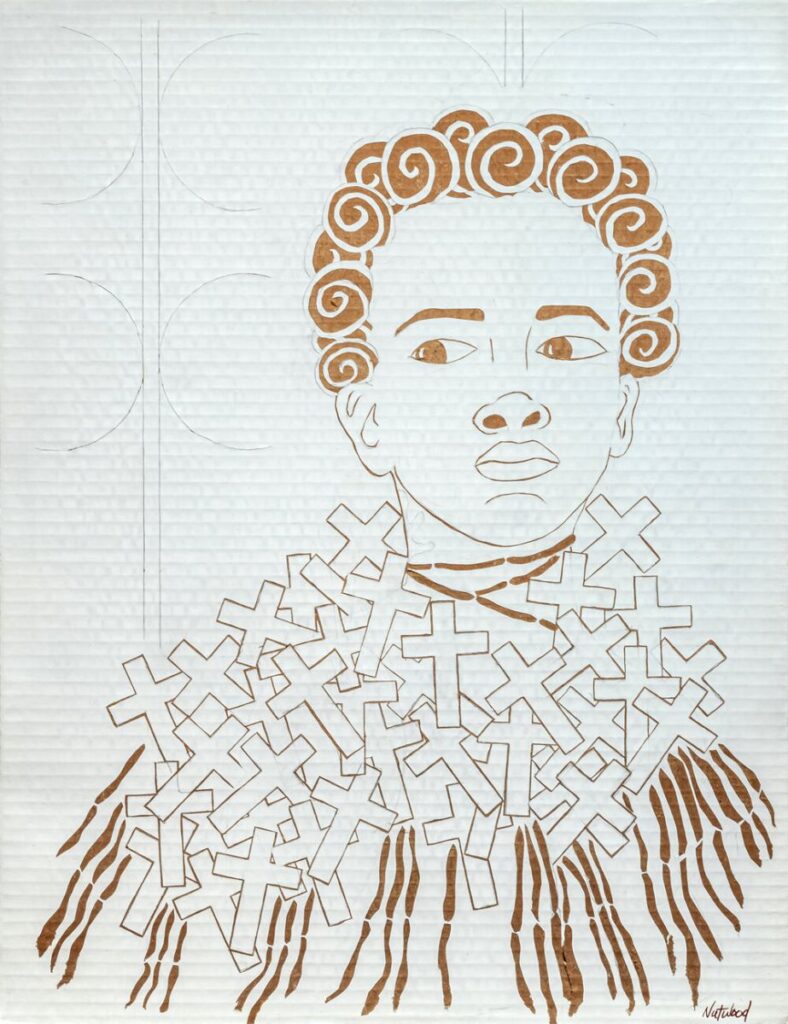Artists Natalie Wood and Charles Campbell reflect on their multidisciplinary artistic practices with Professor Honor Ford Smith.

From the perspectives of Jamaican-born artist Charles Campbell and Trinidadian-born artist Natalie Wood, looking at memory and its reconstruction in the present plays an important role in the works they create. Both artists are based in Canada (Charles Campbell in Victoria, BC, and Natalie Wood in Toronto, ON). This past December, they joined Professor Honor Ford Smith for a virtual conversation about their practice and the experience of exhibiting their work in Fragments of Epic Memory.
Natalie Wood’s Mazalee (2012) is a portrait of an individual wrapped in an abundance of crosses made from carving into a piece of cardboard. The inspiration behind the work comes from a 17th-century Maroon colony in Trinidad with the same name. According to Wood, the crosses in the portrait represent “the crossroads and someone at the crossroads or at the junction of past and present” and of gender and spirituality. For Wood, the cross holds a multitude of meanings: “You’ve got the history of this violence, but at the same time, you’ve got a syncretization of this religion, where African peoples have managed to find, and to kind of integrate, some of the freedom and liberation beliefs.” This portrait is part of the series Are You Cut Out for My Revolution?
To learn more about both Wood and Charles Campbell’s artistic practices, the inspiration behind their exhibiting works and other projects they are working on, watch the virtual conversation here.